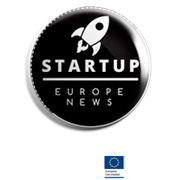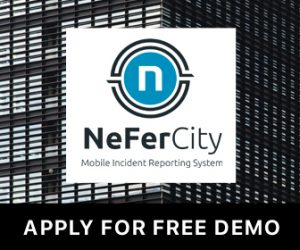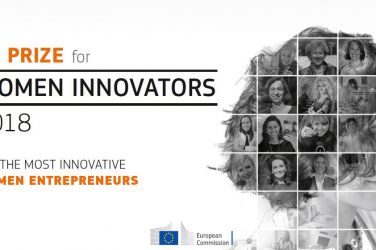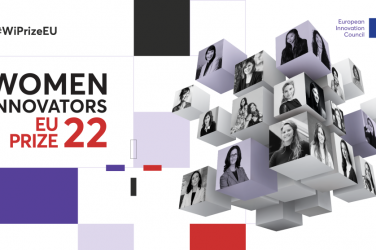Property Technology is coming and is about to disrupt the real estate industry. In this interview with Alina Prawdzik. Head of CEE and ‘Smart & Connected Buildings’ at innogy Innovation Hub, We will discover more about PropTech & ConTech and how is it revolutionising real estate?
Alina Prawdzik A seasoned investor in startups across Europe, Alina is Head of ‘Smart & Connected’ and Head of Central Eastern Europe at innogy Innovation Hub. In the years 2006-2013, Alina worked at eBay.com. She started as Country Manager for Poland and her chief duties included the introduction of PayPal and gumtree to the Polish market. Later, she moved to Bern where she took the position of Regional Manager for European Emerging Markets at eBay European HQ. There she was responsible for the company’s operation in Spain, Austria, Belgium, Switzerland and Poland. Then she was promoted to General Manager-International Expansion Europe and it was her task to introduce eBay to 9 new markets, including Russia and Scandinavia, growing the business in those markets to USD 1 billion. Between 2014 and 2017, Alina managed her own e-commerce strategy consultancy firm – with clients in Poland and abroad. She also is a business angel and invests in startups in Poland and across Europe.
What are PropTech and ConTech?
PropTech (property technology) and ConTech (construction technology) are two areas of innovation innogy Innovation Hubs is looking at very closely. There is a whole team, ‘Smart & Connected’ / Smart Buildings, that is responsible for innovative tech in these areas and I am in charge of it. As we know, buildings consume approximately as much as 40% of all electricity today and we spend up to 90% of our time inside buildings. And just as we have trends for autonomous cars, we believe we’ll live to see autonomous buildings in the near future. Those “smart and connected” buildings will pay their own bills, manage maintenance services, as well as collect rent from tenants. We believe buildings will become our customers. Moreover, we believe that in the future buildings will also take better care of our health and wellbeing, and that we will be leaving our offices healthier than when we were going to work. That is why we are monitoring the PropTech and ConTech industries looking for technologies that can make our vision of the future come true. PropTech is growing fast and it has become so important to the real estate industry that global developers themselves invest and promote these solutions. That is one of the reasons we entered this year into a partnership with Skanska Commercial Development in Central and Eastern Europe. Furthermore, we see an increasing demand for innovative technological solutions in the real estate sector.
Are you investing all across Europe? Or are there specific geographies that you are focusing on?
The headquarters of our parent company, innogy SE, are located in Essen. This is where one of our offices are, but in Germany we are also present in Berlin which we think of as innogy Innovation Hub headquarters. Apart from that we have offices in London, Palo Alto in the centre of the Silicon Valley and Tel Aviv – the heart of the so called Startup Nation. Our newest office is located in Warsaw, as we decided two years ago to enter the CEE region which is a somewhat still undiscovered jewel of the global startup ecosystem. From these five locations, we invest in companies from all over the world, however mostly in Europe, USA and Israel. Currently, there are over 90 startups in our portfolio. These are companies from Germany, the United Kingdom, Finland, Hungary, Israel, South Africa, Switzerland, the United States and the list doesn’t end here. We even invested in a startup company from Bangladesh, so it is impossible to say that our investments are geography-specific – on the contrary, they are truly global.
Can you tell us a little bit about the innovation verticals you are interested in?
At innogy Innovation Hub, we invest in four areas of innovation that we call verticals. “Smart and connected buildings” constitute the first vertical – ‘Smart & Connected’. As I have already mentioned, it covers technology solutions for real estate and construction sectors. Second comes ‘Machine Economy’. In 2-3 years there will probably be as many as 50 billion IoT devices. And these devices will need to talk to each other, they will need to communicate. So it obvious that we should look into projects that enable this technological layer of infrastructure that makes machine-to-machine interaction possible without a human intermediary. All this cannot function without our third vertical – ‘Cyber Ventures’, that is cybersecurity for utility companies such as innogy. If you have 50 billion IoT devices constantly exchanging data, there’s temptation to misuse this data, use it against other users or devices or simply steal it. That is why secure solutions for IoT communication, identification, and operation are vital for a bright future and will become a critical, inherent part of the system. Also, the corporate IT systems of today are still functioning well, but are prone to increasingly sophisticated cyberattacks. To help prevent them, we invest in cyber solutions. And last but not least, our fourth vertical: ‘Disruptive Digital’. Our vision of the future stipulates decentralised, decarbonised and democratised ways of producing energy that are, of course, AI-powered. Basically, one could say that at innogy Innovation Hub, we are moving from kilowatts to kilobytes.
Could you name some companies from innogy Innovation Hub’s portfolio that really stand out?
As I am responsible for our investments in smart and connected buildings, I am best suited to shed light on startups developing innovation for the construction and real estate sector.
At innogy Innovation Hub, we believe that in real estate, there is room for innovation at all stages of a building’s lifecycle. Take the Israeli startup Placense for instance. Their state-of-the-art Data Analytics solution provides businesses with real-time consumer location data and behavioural insights that can prove invaluable when considering where to build the next shopping mall or locate a new store or residential building. Therefore, their product increases the chance of success of new offices or a retail centre and prevents costly mistakes.
Having come up with the optimal location for a building catering to very specific needs, real estate professionals can focus on blueprints. Digital ones that are created using tools provided by Building Information Modelling technology which are becoming increasingly popular across the whole industry. With these tools, it is possible to create, what we call, a digital twin. And we believe that creating digital twins of buildings will lie at the heart of the planning process.
Another Israeli example of a game-changer is Buildots, a company developing a construction tracking platform designed to provide a continuous 360-degree view of the construction site. On that basis, it is possible to assess the real-time constructions status of a given building. The software provides the construction company with a live status update of the construction site, enabling them to manage the cost and timeline more efficiently and helping avoiding budget overruns. In a time with labour and material costs rising and a deficient workforce, what they offer comes in handy.
Another brilliant solution is offered by the Finnish team that founded SkenarioLabs. To provide managers with insight into building use or its condition, they digitalise property portfolios by collating scattered data and building digital twins. With help of Machine Learning, they can report about the technical condition of a building, providing predictive analytics regarding its performance. As a result, disruptive technologies help us plan and construct smart buildings which are perfectly tailored to their purpose.
However, effective building management is essential for the longevity of any construction project, no matter if it’s smart or not. One of the more curious solutions that serve to decrease costs, optimise the use of resources and enhance occupier experience is offered by the Berlin-based company Basking. What they specialise in are real-time occupancy analytics, allowing managers to plan leases and space accordingly, reducing energy waste and maximising efficient use of available space. Their motto is “ROI-driven real-time occupancy analytics for office spaces” and the founders of the startup take it very seriously.
Another company from our portfolio founded in Israel, Oriient, enables traffic and motion analytics along with ultra-precise indoor navigation, with an error margin approximately half a metre, which is 100% hardware-free. Unlike technologies based on wireless connectivity, Bluetooth or beacons, what they propose is making use of something omnipresent, even in the buildings that are yet to be built – the Earth’s magnetic field. Every building interacts with our planet’s magnetic field and creates a unique magnetic fingerprint which we can take advantage of with our smartphones. Their target-customers include malls, megastores, hospitals, universities or office buildings and their technology is already operational and being tested.
What signifiers make a company really stand out to you? What are the things that make you think that a given startup and team would be a great fit for innogy Innovation Hub?
We are scouting the innovation ecosystem for startups that fit our vision of utility of the future, for companies that will help us redefine the energy sector. Every year, we meet with hundreds of founders and discuss hundreds of solutions. When a company catches our attention, we have a close look at a number of things before we make the decision whether to invest.
First and foremost, we analyse what problem they are trying to solve, how they are solving it, and is it realistic? Very often, founders tend to see what they focus on as a much bigger problem than it actually is. Often we go to industry-specific partners and ask them for their opinion – do they view it as a problem and if they are willing to pay the price for it. Second comes the technology. These are really the basics: how advanced is it, how easy to copy, does it deliver, what are the Unique Selling Proposition (USP) and business proposal. But even the greatest technology means very little when there is no team behind it. That is why we always get to know the founder and the co-founding team, and this goes beyond one or two meetings. What are their skills? Are they complimentary? We always do an assessment on what they already have and what they need. Afterwards, the best companies are invited to a due diligence process which if successful ends with an investment agreement.
To sum up, for innogy Innovation Hub, it is essential to make sure the startup shares the company’s strategic vision of utility of the future. Then come the people behind the startup and their dreams and ideas, the tech and its competitive advantages, and the product-market fit. All this within our four strategic verticals: smart and connected buildings, machine economy, cybersecurity, and disruptive digital – plenty to choose from.












Show Comments